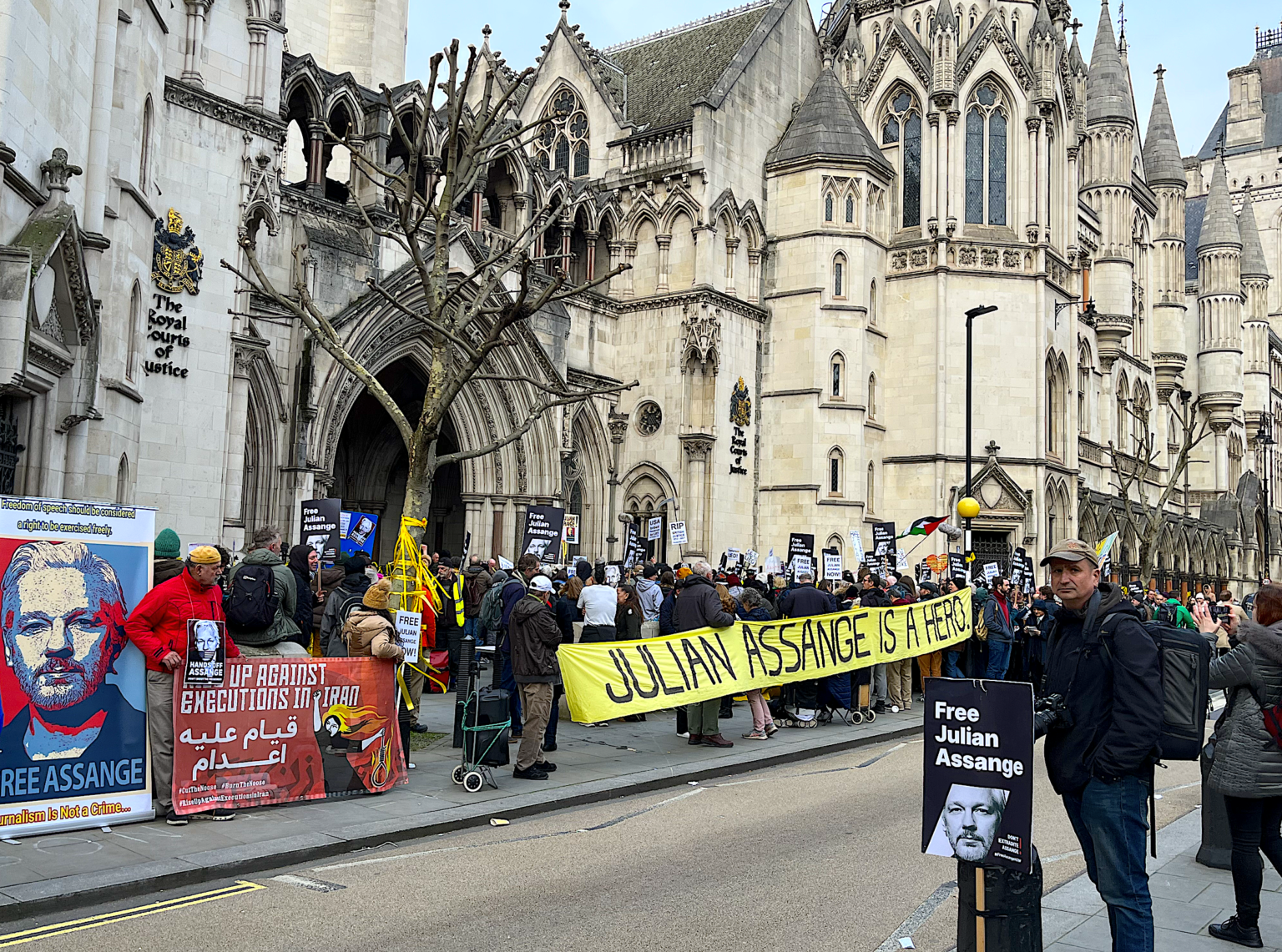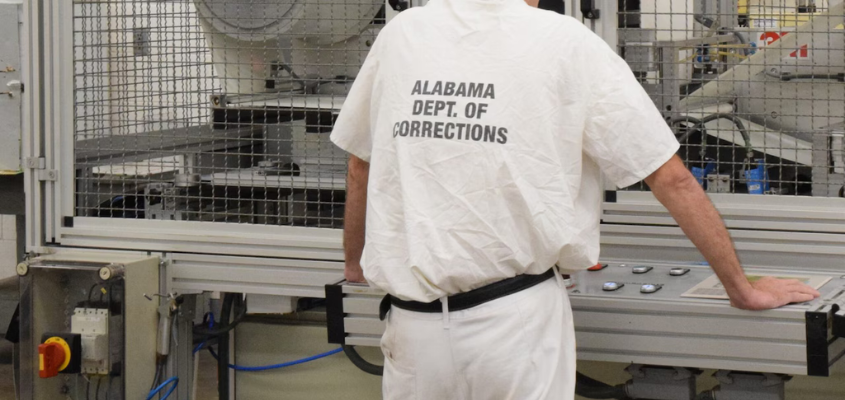Conditions So Bad That Prisoners Set Themselves on Fire: Crisis and Cover-Up at Red Onion Super-Max Prison
November 26, 2024

Artwork depicting prison leaders. Photo: Kevin Rashid Johnson.
By Phil Wilayto – Nov 20, 2024
Can you recognize these faces? All these leaders made profound sacrifices for their people, and the artist who created this powerful drawing must be considered one of them. Kevin “Rashid” Johnson, who is extensively quoted in this shocking article, is one of them, one of the men being tortured 24/7 at Red Onion State Prison. Next to Mumia Abu Jamal, Rashid is the most read and respected prisoner in the US. Red Onion is a super-maximum security prison designed and built to be torturous in every way, just like Pelican Bay State Prison in California, where prisoners surmounted impossible odds in 2011-2013 to stage a series of three mass hunger strikes joined by 30,000 prisoners at their peak. To offer your help and support to the prisoners at Red Onion, use the contact information at the end of this article. Photo: Kevin “Rashid” Johnson.
Can you recognize these faces? All these leaders made profound sacrifices for their people, and the artist who created this powerful drawing must be considered one of them. Kevin “Rashid” Johnson, who is extensively quoted in this shocking article, is one of them, one of the men being tortured 24/7 at Red Onion State Prison. Next to Mumia Abu Jamal, Rashid is the most read and respected prisoner in the US. Red Onion is a super-maximum security prison designed and built to be torturous in every way, just like Pelican Bay State Prison in California, where prisoners surmounted impossible odds in 2011-2013 to stage a series of three mass hunger strikes joined by 30,000 prisoners at their peak. To offer your help and support to the prisoners at Red Onion, use the contact information at the end of this article. Photo: Kevin “Rashid” Johnson.
Just how bad are things at Virginia’s Red Onion supermax prison?
On May 24, 2023, DeAndre Gordon deliberately started a fire in his cell that caused a third-degree burn on his leg. Gordon, who is Black, said he had been badly beaten by guards at the prison and feared for his life.
“I didn’t know any other way that I could get out of their custody besides to set myself on fire,” Gordon told a reporter with Radio IQ. “Because they don’t have a burn center in Southwest Virginia, I knew that I would be going to Richmond.”
According to the American Burn Association, Virginia has just three facilities capable of dealing with severe burns. Two are in Richmond: the Evans-Haynes Burn Center at VCU Health, a state institution, and the Wound Healing Center at Doctors Hospital, a private hospital. The third is at the Eastern Virginia Medical School in Norfolk.
Red Onion, in Wise County, is about 375 miles west of Richmond.
On Aug 23 of this year, Demetrius Wallace, 27, also Black, says he set fire to his leg to force a transfer out of Red Onion.
The Defender spoke with Wallace on Nov 1.
“I did actually set my foot on fire,” Wallace said. “I got the charge that shows it. They came to my cell door and saw the flames on the side of my leg. They took me to medical, they assessed me right there that night, told me they don’t deal with burns, they would have to talk with the nurse practitioner, and that I would have to be taken off the mountain.”
“That was Friday, Aug 23… so Monday, around 2 in the afternoon, they drove me seven hours away to the VCU burn unit. As soon as the doctor sees me, he said, ‘When did this happen?’ I said, ‘Friday.’ He said, ‘Why haven’t you been here?’ I said, ‘I’m not trying to be funny, but I can’t drive myself from the prison.’
“He said to the COs [correction officers], ‘You see this foot? You tell your major I can’t treat him immediately, I have to put him on antibiotics to treat the infection.
“I stayed in the hospital for 14 days. They had to do an allograft [a temporary graft, using skin from a skin bank] and a skin graft. After 14 days, I was sent back to Red Onion State Prison. Harassed me, everything is still the same, stuck me in the hole, still being denied access to my JPay [a commercial email service for prisoners] or my actual phone.”
Asked why he had set himself on fire, Wallace said, “I got a lawsuit in because I was assaulted and sprayed by the COs twice while I was handcuffed. So as soon as I filed the lawsuit, they started retaliation. They denied my fiancé access to the prison, for no reason; you had COs and a lieutenant looking at her Facebook; they messaged her… she has screenshots.”
Wallace also said he wasn’t the only prisoner who has recently set himself on fire.
“I was in medical, and I witnessed five other offenders who came back there. They had burned their legs or arms. There are still two or three there now.”
On or about Sept 15, Ekong Eshiet, a 28-year-old African-born prisoner at Red Onion, says he also set fire to his leg.
On Oct 25, he gave an interview to Prison Riot Radio, a Philadelphia-based online program that provides a platform for prisoners to speak out about prison conditions and other issues.
In the interview, Eshiet said that, two days before, on Oct 23, he had begun a hunger strike.
“I’m trying to get off of here. I’m doing my best, I’m going about this the right way, I guess, with the hunger strike way. But if I have to, I don’t mind setting myself on fire again, and this time I’ll set my whole body on fire.
“Before I have to stay up here and do the rest of my time up here, I would rather die before I stay up here, because every day I’m dealing with discrimination, whether it’s behind my race, my last name or my religion.”
The Defender has been in touch with Kevin Rashid Johnson, a longtime prisoner activist and author who, last December, went on a 71-day hunger strike, demanding to be transferred from Red Onion because he said there were no medical facilities in that area equipped to deal with his several severe medical issues. He eventually was sent to VCU Health, then transferred to Greensville Correctional Center, and is now back at Red Onion.
Rashid wrote the Defender that he was in the medical unit at the prison when Eshiet was brought in for treatment, and Rashid said he saw for himself the severe burns on the man’s leg.
“He had been placed in a cell next to me in the prison’s medical department, where I overheard him talking with others about a series of prisoners, including himself, setting fire to themselves. I could not help asking him what was going on.
“He told me simply that the racism, the horrid and inhumane conditions at the prison, were so intolerable that he and others were setting themselves on fire in desperate attempts to get transferred. These were not protests, he made clear, but acts of desperation hoping to get out of an insufferable situation.”
Rashid, at great risk to himself, wrote a report that he sent to outside news media and support groups. The report was picked up by Prison Riot Radio, the Arlington-based Interfaith Action for Human Rights and The Virginia Defender, among others.
On Oct 25, this reporter called Red Onion and spoke with the warden, David Anderson. I explained that we had received a report that as many as a dozen prisoners at Red Onion had recently set themselves on fire, and asked if the report was correct.
“No, it’s not true,” Anderson said.
After a pause, he added, “I really shouldn’t be commenting on this.”
“So you’re saying that no one has set themselves on fire?” I asked.
“I can’t speak any further about that,” Anderson answered.
I told Anderson I would send him an email, with further questions. He said he would forward the email to the proper department for a response.
These are the questions sent on Oct 25:
* Over the last two months, did one or more prisoners at Red Onion set themselves on fire, as claimed by the letter writer?
* If so, what are the names and prison ID numbers of the men?
* What is now the location of each of the men?
* What is the medical condition of each of the men?
* Have any of the men been charged with institutional or criminal offenses as a result of these alleged actions?
As of this writing, on Nov 4, there has been no response.
Meanwhile, we have been trying to find corroboration on the reports.
In addition to speaking directly with Demetrius Wallace, the Defender called Marsha Prichett, Eshiet’s mother, on Oct 25. She said her son has had a very hard time since being sent to Red Onion in June.
“There’s been name calling, they call him Eat-Shit, they spit in his food. After he hurt himself, they treated him for minor burn wounds. “Then the hospital called us to let us know Ekong was in the hospital, but they said we couldn’t visit with him or talk to him because the warden said he was a danger to himself or others. So we couldn’t visit because of what the warden said.”
On Nov 1, a Friday, the Defender reached out to VCU Health to ask if any Red Onion prisoners had been treated there recently for severe burns. At first we were told the hospital was not allowed to give us that information because of the issue of patient privacy. We hadn’t asked about any particular patient.
On Nov 4, a Monday, we received a call from Danielle Pierce with VCU Public Relations. We asked if, from Aug 1 until the present, any Red Onion prisoners had been brought to VCU Health for treatment for severe burns.
“I’m happy to look into it for you,” Pierce said.
Since the Defender’s press deadline was the next morning, no answer was expected in time for this story, but any response will be posted here. [Post-publishing update: As of Monday, Nov 25, there has been no response.]
On Nov 1, the Defender also called and left messages at the offices of Virginia General Assembly Delegate Don Scott, a former prisoner who is now Speaker of the House. The Defender will report any response on the website.
The Defender has also have been trying to get various Virginia media to cover this story.
What is Red Onion?

This Google Earth map gives some idea of how isolated the Red Onion super-max prison is, situated on top of Red Onion Mountain in rural Wise County, far from the famiies of most of the men confined there.
The Justice Policy Center of the Urban Institute describes a supermaximum prison, or “super-max,” as “designed to hold the putatively most violent and disruptive inmates in single cell confinement for 23 hours per day, often for an indefinite period of time.”
Red Onion is a super-max prison. It opened in 1998 in the midst of a big right-wing and media scare about a new crime wave that supposedly was coming, but somehow never did.
Red Onion was supposed to house around 800 of “the worst of the worst” Virginia prisoners. As it turned out, there weren’t enough “worst” prisoners to fill the cells, so Virginia began taking in prisoners from other states—for a price. Further, many of the Virginia prisoners who wound up there were transferred from lower-level security prisons simply for breaking rules, not for committing violent crimes.
Red Onion quickly gained a reputation for extreme repression, cruelty and racism.
A 1999 report by Human Rights Watch stated that the “Virginia Department of Corrections has failed to embrace basic tenets of sound correctional practice and laws protecting inmates from abusive, degrading or cruel treatment” and claimed that “racism, excessive violence, and inhumane conditions reign inside.”
In 2001, Amnesty International released a report citing human rights violations at the prison.
The 2016 HBO documentary film “Solitary: Inside Red Onion State Prison” focused on the use and effects of solitary confinement.
In one particularly notorious case, Nicolas Reyes, a Salvadoran immigrant, was kept in solitary confinement for 13 years because he couldn’t complete the mostly English-language Step-Down Program required to be released.
Reyes only spoke Spanish and couldn’t read or write in any language.
With support from the ACLU and other organizations, Reyes was finally released and received a monetary award of $115,000 – which works out to about a dollar for every day he suffered in extreme physical, social, cultural and linguistic isolation.
This is what Rashid has recently written about the prison:
“Red Onion and its sister supermax Wallens Ridge State Prison, are both located in the mountains of the far southwestern corner of Virginia in rural, segregated white communities, while their prisoner populations are near totally Brown and Black.
“Since opening in 1998 and 1999, respectively, both prisons have operated without oversight in regions where the local populations are culturally conditioned to secrecy and hostility to outside scrutiny. Which makes for prisons shielded by a curtain of secrecy, inhumane abuse and racism.
“And while Virginia has been closing down many of its predominantly Black staffed prisons across the state, it has shifted resources and focused new prison construction projects in favor of opening and operating prisons in remote, racially segregated regions of the state like where Red Onion and Wallens Ridge are located.
“The strongest public exposure and protest needs to be directed at these expensive, inhumane and unneeded human warehouses. They must be opened up to broad public scrutiny and accountability, and closed down.
“This exposure and protest should be continually directed against the Virginia governor, Virginia Department of Corrections Director Chadwick Dotson and the state’s general assembly.
“Every effort must be made to share this information and increase public awareness about these places, their inhumane conditions and the desperate extremes they are driving fellow humans to in their pleas for relief.
“Dare to Struggle Dare to Win!
“All Power to the People!”
Interfaith Action for Human Rights has started an online petition urging change at Red Onion. To sign, follow this change.org link.
As this goes to press, Kevin Rashid Johnson, Ekong Eshiet and Demetrius Wallace are all being held in solitary confinement—what the prison calls “restrictive housing.” All three men have reason to fear for their lives.
Rashid, who has been targeted because of his outspoken condemnation of the whole Virginia prison system, has outside attorneys working to try to get him transferred out of Red Onion.
Note: Both Rashid and Demetrius Wallace have given the Defender permission to quote them for this story. The Defender hasn’t spoken directly with Ekong Eshiet.
Conclusion
At this point, the Defender is confident in reporting that at least two men held at the Red Onion State Prison—Demetrius Wallace and Ekong Eshiet, and possibly others, have taken the desperate step of setting themselves on fire to try to force the prison officials to transfer them out of that notorious hellhole.
And the prison system is not only denying that these events ever happened, but have taken steps to isolate the men involved in order to keep the public from knowing about it.
The Virginia Defenders are calling for an immediate, independent, impartial, outside investigation of the conditions of these three men, as well as the general conditions at Red Onion. Copies of this story will be sent to Gov. Glenn Youngkin, Virginia Attorney General Jason Miyares, all members of the Virginia General Assembly, U.S. Senators Tim Kaine and Mark Warner, Virginia Department of Corrections Director Chadwick Dotson and all the Defender’s contacts in the Virginia media.
And to the readers: if you want to get involved in the struggle for Prison Justice, email the Virginia Defenders for Freedom, Justice & Equality at
DefendersFJE@hotmail.com; call or text 804-644-5834 or write to: Defenders, PO Box 23202, Richmond, VA 23223.
https://orinocotribune.com/conditions-s ... ax-prison/























